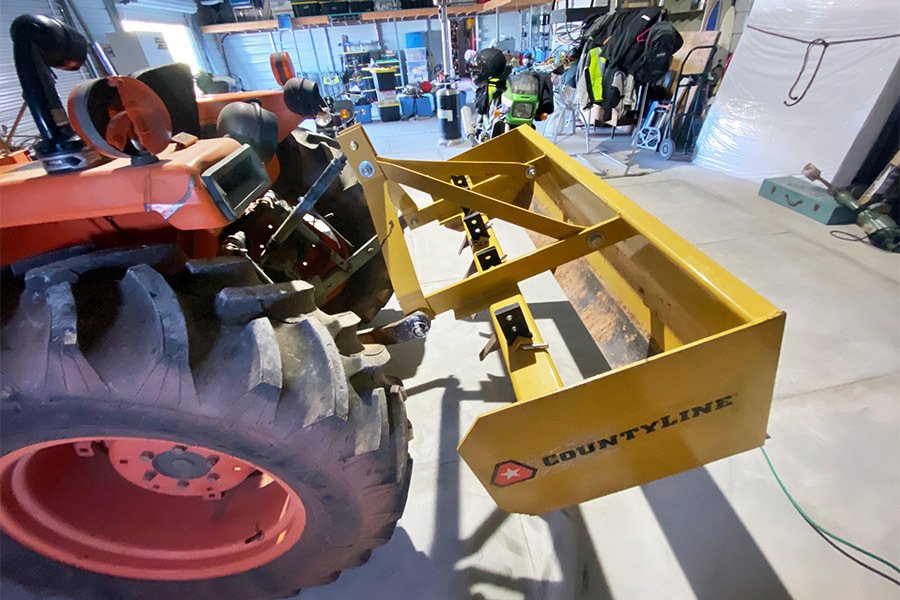Most people think of New Mexico as a barren, desert state. Much of it consists of broad expanses of high, scrabbly bush land. But that’s not nearly all there is here. New Mexico has two mountain ranges running north to south dividing the land into separate areas each with their own style of terrain, east of the Pecos River you’ll find the flat, oil-rich Permian Basin. This area is New Mexico’s Golden Goose that never seems to run out of eggs. The Permian Basin pays a huge amount of taxes to the state coffers. The odor of salt water mixed with oil is everywhere. It makes me a little homesick for the bilges of boats I used to build and repair in Florida.
Moving west from the Pecos River you come to my mountains, the Sacramento Mountains. Tinfiny Ranch lies on the western foothills of the Sacramento Mountains looking out over the Tularosa Valley. At 6000 feet Tinfiny Ranch is both wetter and cooler than the small towns down in the flat lands of the valley 1500 feet below.
Tinfiny Ranch has small trees, maybe 20 feet high and all of the plant life is larger and happier than the small shrubs you find at lower elevations. Within Tinfiny Ranch there are two different ecosystems: the relatively damper lower arroyo area where some idiot decided to put the shack we live in and the higher, just slightly more arid upper area where the off-grid trophy shed sits. The elevation change is only 50 feet but the trees are noticeably larger and the undergrowth denser down by the Arroyo. There’s even a little grassy lawn struggling to survive in the lower reaches.
The upper and lower areas are connected by a steep dirt road that is always in need of repair. Whenever it rains the water cuts deep ruts across and parallel to the road. Monsoon season makes the road 4-wheel drive only. UPS and FedX stop delivering when the road gets too bad. They leave packages by the entrance gate instead of at our door.
Tractor Supply’s County Line Box Blade is just the ticket for grading and smoothing out the ruts in our driveway. Five feet wide, the box blade connects to the 3-point hitch on the back of standard tractors and comes mostly assembled except for a few thick bars of steel that make up the top mount. It’s a heavy chunk of steel and I can only lift one side at a time to move it.
Five depth-adjustable scarifying teeth mounted ahead of the leveling blade allow the box blade to break up hard ground. These teeth will catch roots and rocks and rip them out of the ground making it easier for the following blade to level the area. If you didn’t have the scarifying teeth the blade would just bounce over some obstacles leaving behind an uneven grade.
Tinfiny Ranch has a lot of big rocks from softball size to larger than a shopping cart. Running over one of these big boys will kick the box blade into the air with a loud crash. Some rocks you’ll want to dig out of the ground with a pick and pry bar instead of beating up the box blade.

With the box blade it took just a few hours to straighten out the road leading to the upper level. I’ll need to do some more work on it to fill in some low spots and cut down some high spots but it’s still raining so I don’t get too excited about making it perfect. At some point we will either asphalt the road or pave it with concrete. I’m leaning towards asphalt since I won’t have to do it.
I give the Tractor Supply box blade high marks for its low-ish $1000 price tag and high quality. That seems like a lot of money but try to find a used one. If you manage to it will be a wreck and cost $500. This County Line unit is a well built, heavy tool that will last your lifetime and maybe more. Once you get a box blade you’ll start finding all sort of areas that need leveling. Soon there won’t be a plant standing and your yard will be a broad, featureless plain, like some areas of New Mexico.
Keep us in implements: Please click on the popup ads…we get paid every time you do!
Whoa….a free subscription to ExNotes!


sounds good.
I once heard about a method of tilling cement mortar into the earth then watering it down. When it hardens you have a concrete driveway that looks like dirt. I was told that the method was featured in a magazine before I was even born but unfortunately never asked for more details. That was forty years ago and the man that told me has passed. But surely someone interested would test this on a small patch of land. I for one would find it interesting.
I think it would help
Stiffen the dirt up but it would be very weak. Any weight would break it up.
On a flat surface with only foot traffic it might work.
Yup, probably right. I believe it was about a foot path but you could throw some rebar in there.
Waterbars, not just a place to get a cold beer. Google it up!
Living Florida, Land of Free, we have plants every where! Of course we have no hills… Very interesting read, it reminds me of my home in Missouri, hill,s rain and always working on the land.